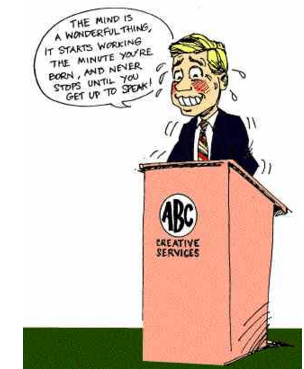Before starting his presentation on the topic ‘Witty and Wise’, Ranbir tells his audience a story about the famous Thomas Edison–
Thomas Edison was a great scientist and inventor. He was always looking for smart, open-minded young scientists to work for him on his many inventions. Whenever he met someone he thought might make a good candidate, he would take them to dinner. Yes! You heard me right! Dinner interview. The result was not decided until the food arrived. Edison would watch what the inventor did when the food arrived. If the applicant tasted his food and then salted it, he was seen as a good fit for his team. If he salted his food before tasting it, the young man was not hired. Edison knew that people who did things automatically and made presumptions without knowledge would not be able to look at problems and find innovative solutions. Delectably witty.. isn’t it?
After the presentation, he mentioned that the audience enjoyed the story and it put him also at great ease when he saw their eyes glitter up with smiles and chuckles.
Whether you are making a presentation or delivering a speech, humour serves as a powerful tool for engaging the audience. It helps in inviting their attention, facilitate better learning, and invite appreciation. It ensures that the audience remembers you and the message delivered by you for a longer time. After all, who does not enjoy lighter moments!?
What to include and exclude?
Including humour in presentations and speeches can be a tricky situation
Following pointers can help you understand what to pick and what not to go for.
Use Anecdotes: Research suggests that humorous anecdotes and stories tend to have a more meaningful impact than jokes. They provide scope for smoother delivery in comparison to jokes because not every professional is a comedian.
Play safe: Include humour from your own area of work and expertise. In case the audience is not from your field of expertise, then try to be careful while including humour. Don’t include something too technically related to their field as it might not be well received. This also applies to presentations where humor might not be much of application. So, don’t try to fit it in when it isn’t relevant and required.
Laugh at yourself: Including humorous life incidents helps in setting a good rapport with the audience. It helps the audience to know you and also provides an impression of an openness in your personality as you are initiating with a humour about yourself. The tricky part about this kind of humour is to choose what your audience would relate to as this helps them build an empathetic connection with you and makes them more receptive to what you speak.
“I say here that I am a man who is used to stress. My wife… She has a credit card (pause and look away, then look back) ….In MY name.”
Be professional: Remember that you are not a comedian but a professional including humour to engage his audience! Try to include humour that has a standard suited to your audience. Use words, phrases, jargon, appropriately. Make sure it does not become shallow or vulgar in any way. Avoid double meanings, as they might come across as indelicate.
Learn about the technicalities: Try to learn about different styles of injecting humour. These could be exaggerations, puns, playing with words, laughing about yourself, etc. Use them wisely to reap their benefits.
How to position humour in your presentation
Another tricky question you might face when you think of including humour is – whether to start the presentation with humour or include it in the flow, or end it with humour?
Research suggests that humour can be a good tool to start off with as it helps build a connection with the audience, and also gives them that feeling of, “This is going to be nice!” , “He is witty!” , “what an amazing start!”.
“ At the very start, let me say that we both have something in common. You don’t know what I’m going to say… and neither do I.” -Robert Orben, Speaker’s Handbook of Humour
If you are given a terrible introduction: “Sometimes I wish I was one of those men (women) who need no introduction.” -Roger Langley
It can also be used at points during the presentation with relation to particular aspects being discussed. Here it helps break the monotony, invites attention and can be a good way of facilitating better learning of concepts too.
A speaker talking about eliminating those people who won’t subscribe to the team spirit said…
“ We used to say on the farm that you can’t teach a pig to sing. It wastes your time – and it irritates the hell out of the pig.” -Gene Perret, How to Hold your Audience with Humour
You can also certainly end on a humorous note. If placing humour towards the end, do ensure that it has a clear point and take away message for the audience and leaves your mark on their minds.
“Ladies and gentlemen you’ve no idea how it feels to come to the end of another brilliantly written and impeccably delivered speech. Actually… neither do I.”
Some useful Tips:
- Make sure you practise well.
- Provide references when you have borrowed from a resource. Stay ethical!
- Extras are always welcome. Keep some backup.
- Deliver humour as per the responses from the audience.
- Be authentic: it should not appear that you are doing something that does not go with your genuine persona.
NOTE: Don’t try too hard. Don’t be under the pressure to include humour. Do what naturally comes to you. Be more authentic.
So, utilise humour wisely and it shall work wonders for you.






